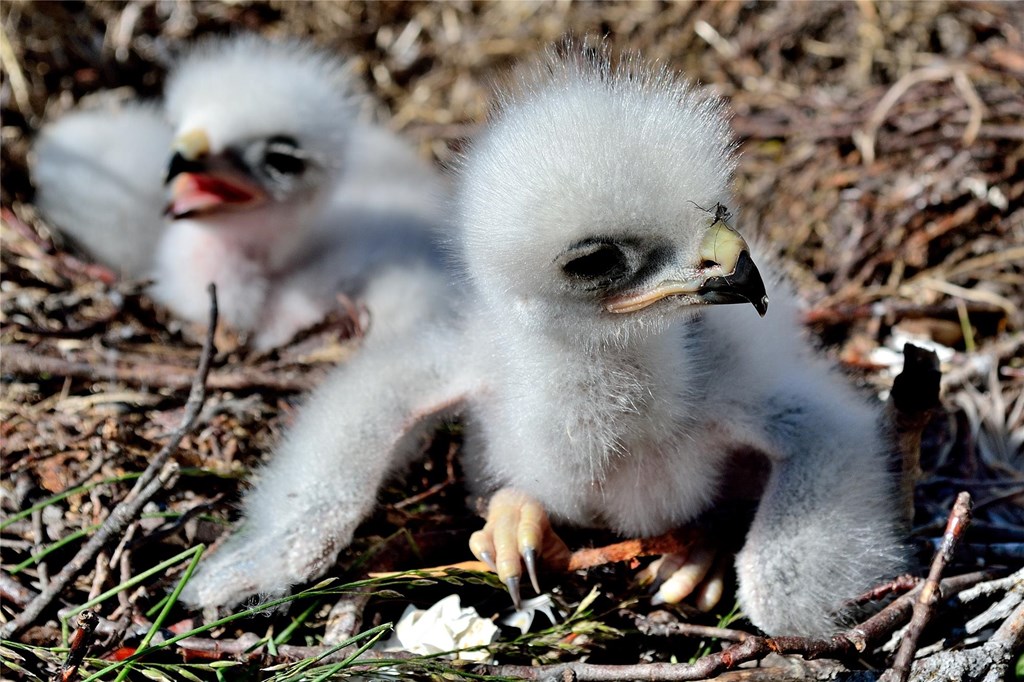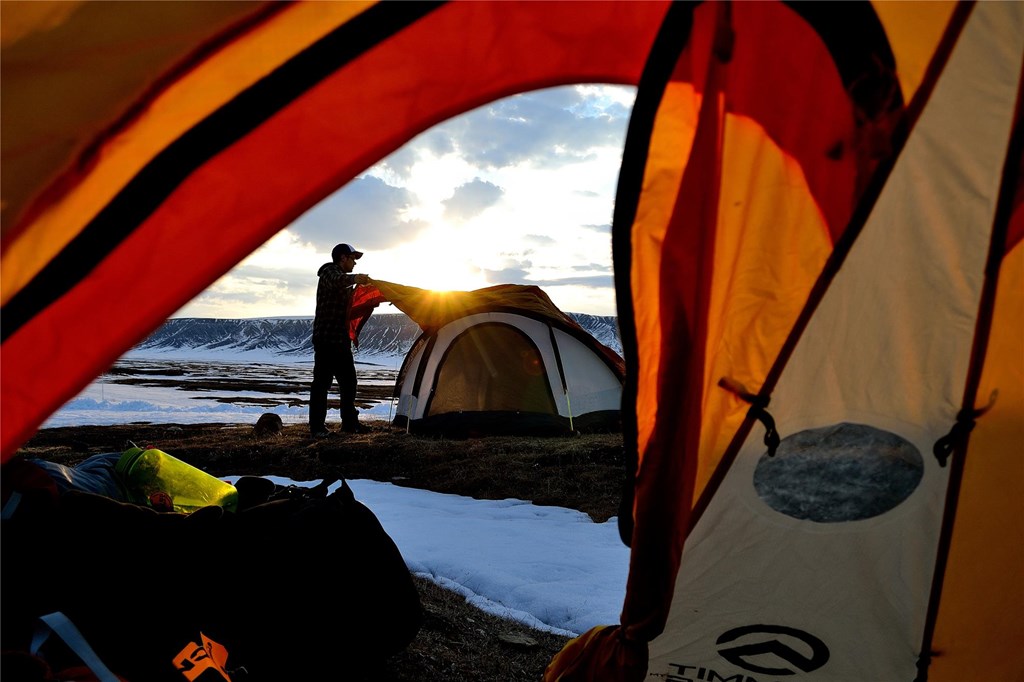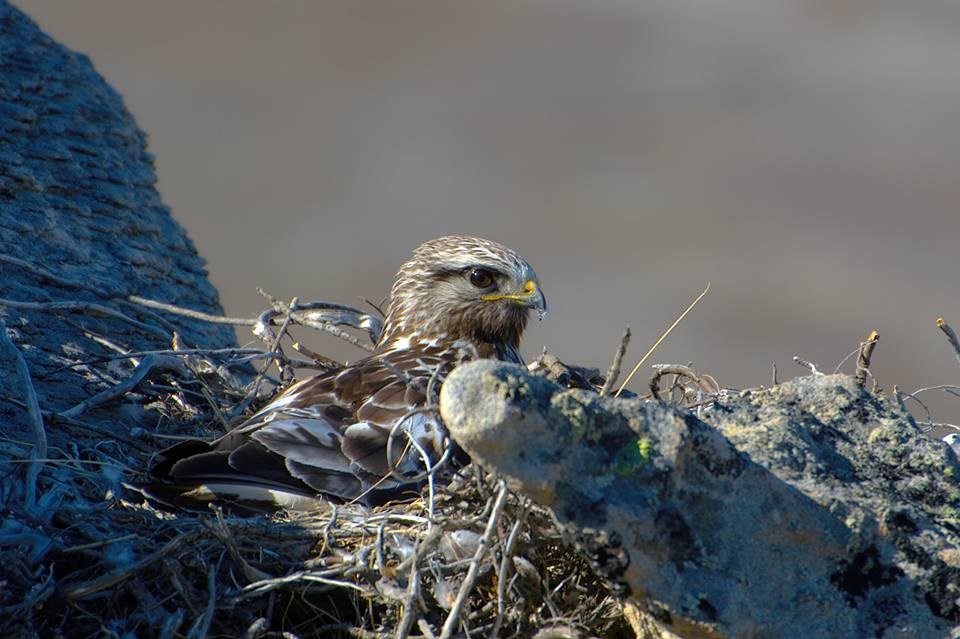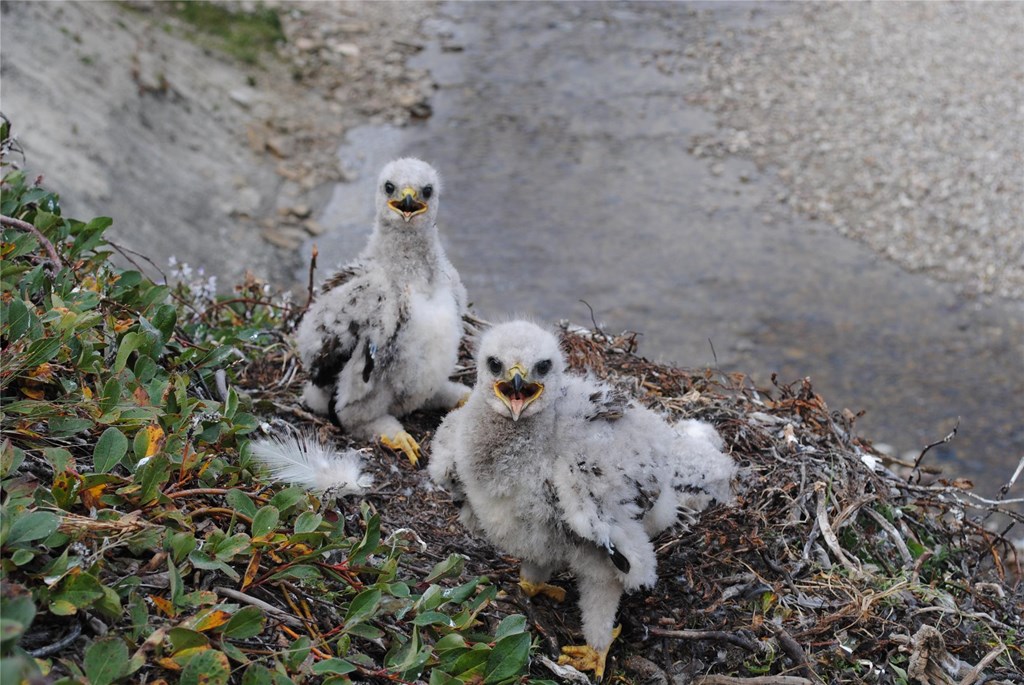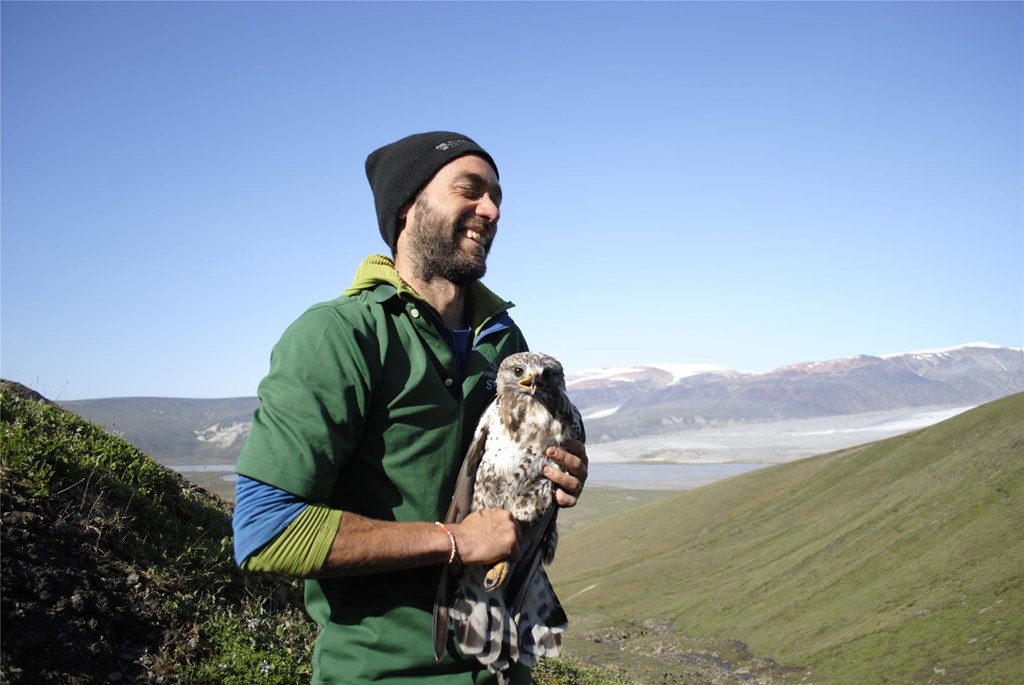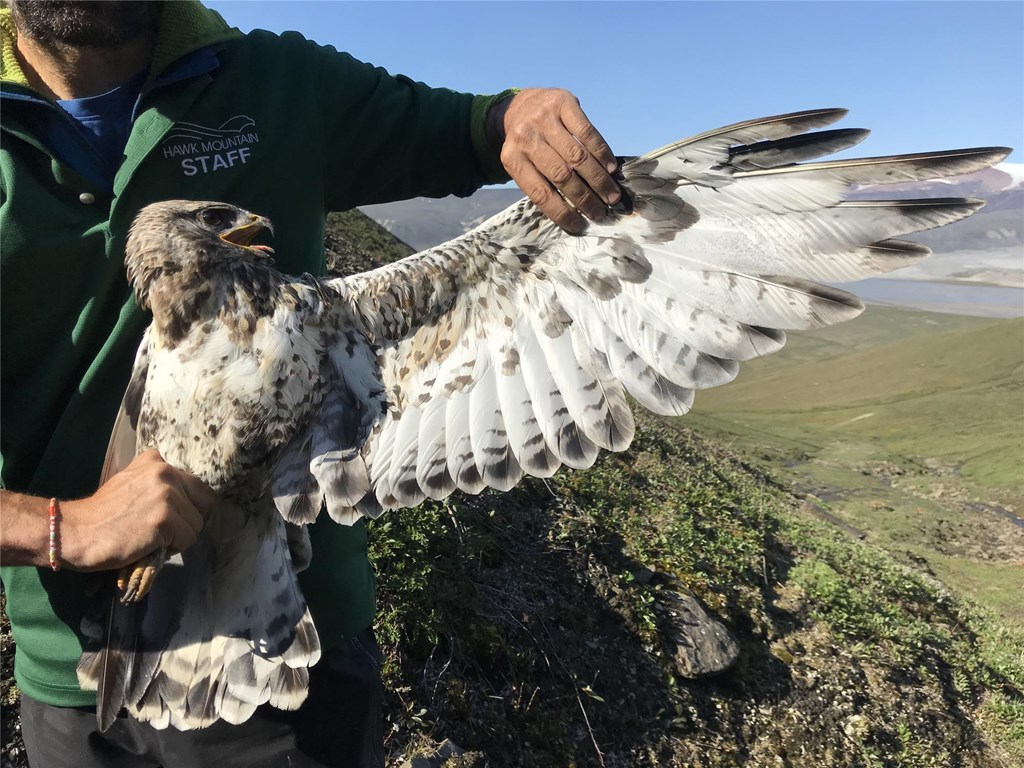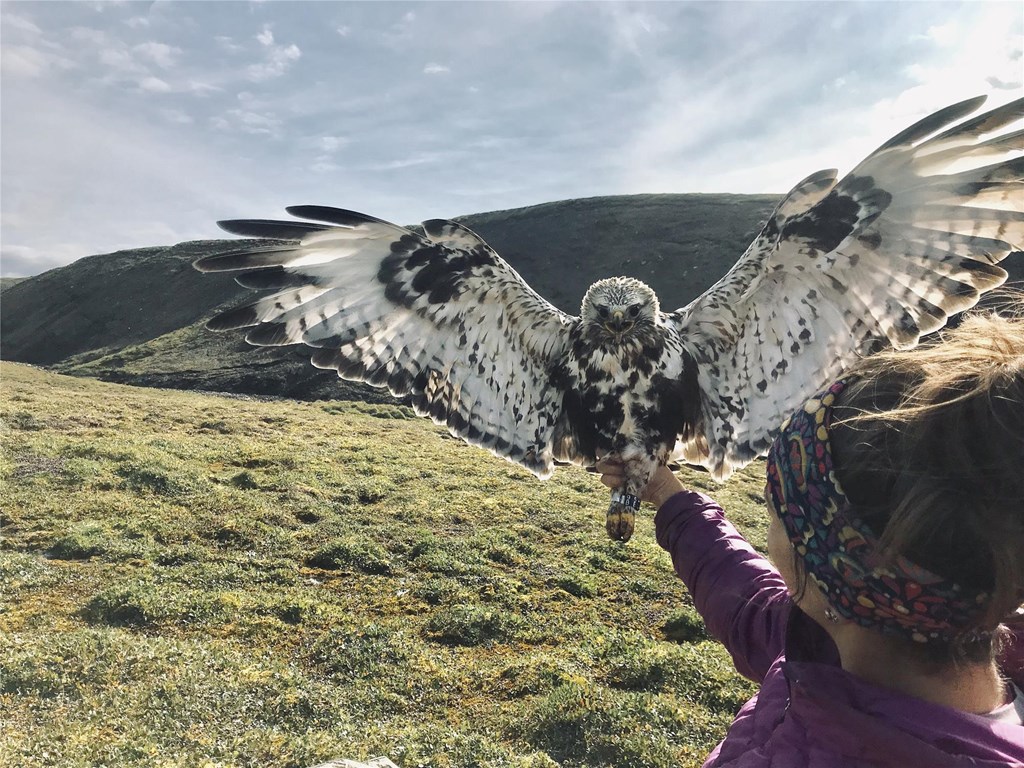Rough-legged Hawks

The rough-legged hawk is a wide ranging and iconic species, but remains one of the least known species of Arctic breeding birds. The extent of its migratory behavior between its breeding and wintering areas is poorly known, as well as movements between breeding attempts and wintering areas in successive years. Moreover, ongoing climate changes might be affecting migratory movements and habitat selection during winter as well as increasing the collapsing risks of their nesting structures in the Arctic. The paucity of basic knowledge on rough-legged hawks, and especially on their movements, greatly limits our ability to assess the species' basic ecology. This is most unfortunate as it hinders considerably the development of management plans for the species.
Collaborative Work
We have been collaborating with several researchers worldwide to acquire a complete understanding of rough-legged hawk ecology. Among other things, we have been monitoring rough-legged hawk populations on their breeding grounds in the Canadian Arctic for more than 10 years as part of the Ecological Studies and Environmental Monitoring at Bylot Island project (www.cen.ulaval.ca/bylot). Moreover, we have also been involved in the Rough-legged Hawk Venture project, a global collaborative effort aiming to understanding movement ecology of the rough-legged hawk using tracking devices. Those research projects are crucial in order to assess population trends, conservation status, and ecological relations between ecosystem members. Given the fast happening changes facing the Arctic ecosystem, the importance of such long-term monitoring projects has never been so true.
The Future
The next steps in this important work are to:
- Assess breeding dispersal behavior and nesting site fidelity
- Measure the threats facing rough-legged hawks both in terms of Arctic industrial development as well as climate change.
- Assess migration phenology (timing), habitat use during migrations and on wintering grounds
- Measure contaminant load, survival rates and causes of death of rough-legged hawks
- Continue the monitoring of breeding and wintering populations
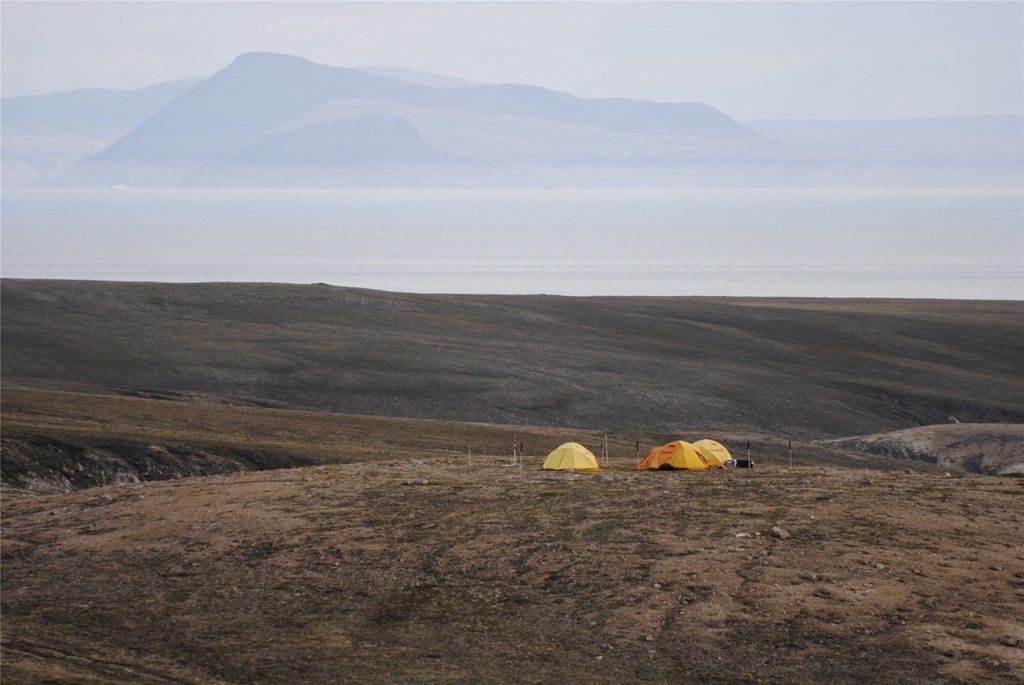
Support
We are thankful for the support and assistance we have received over the years:
- Canada Research Chair in Polar and Boreal Ecology, Université de Moncton (NB, Canada)
- The Natural Sciences and Engineering Research Council of Canada (NSERC)
- The Polar Continental Shelf Program (PCSP, Natural Resources Canada)
- The Fonds de Recherche du Québec Nature et Technologies
- The Canadian Network of Centres of Excellence ArcticNet
- Max Planck Institute for Ornithology (Germany)
- The community of Pond Inlet (NU, Canada)
- Parks Canada (Sirmilik National Park)
- The W. Garfield-Weston Foundation
- Université Laval (QC, Canada)
To help support this important research, please contact Senior Scientist Dr. JF Therrien (570-943-3411 x104, [email protected]) or donate today using the button below. Be sure to include in the comments of the form that the online gift is for rough-legged hawk research.
